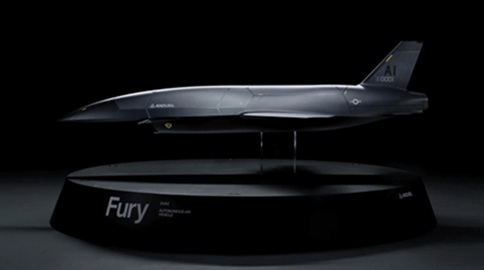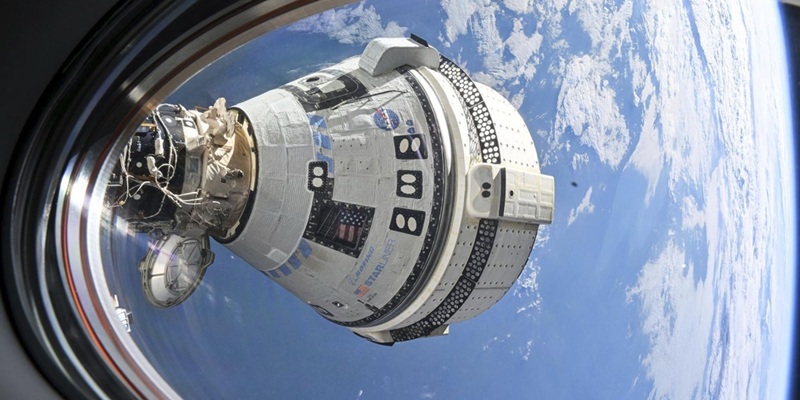Imagine signing up for an 8 day mission to the International Space Station and then getting stuck up there for 9 months.
That's what happened to two American astronauts thanks to Boeing’s (BA) faulty rocket which broke down mid mission. Fortunately, SpaceX swooped in and rescued them.
In 2014, NASA hired both SpaceX and Boeing. NASA needed a new spacecraft for astronauts to travel to and from the ISS. The idea was to end reliance on Russia’s Soyuz spacecraft.
SpaceX developed Crew Dragon. It has already completed 26 missions to the ISS since 2020. Boeing is yet to complete its first. And this is after spending $4 billion over a decade on its Starliner capsule!
Boeing used to be a symbol of American innovation. It helped build the Space Shuttle and the Saturn V rocket that put men on the Moon.
Now it’s being disrupted. And it’s not alone...
Here’s why the “Big 5” defense contractors must die.
- “Hey Google, show me an oligopoly.”
Back in the early 90s there were over 50 companies that regularly made weapons, tanks, fighter jets, and battleships for the US military.
Through decades of consolidation and acquisitions, only 5 are left standing.
The so-called Big 5 dominate the U.S. defense industry. Over 80% of defense dollars flow into the pockets of Boeing, Raytheon Technologies (RTX), Lockheed Martin (LMT), Northrop Grumman (NOC), and General Dynamics (GD).
Their lucrative contracts can last 10 years or more, offering a steady stream of cash from good ol’ Uncle Sam.
For investors, that kind of predictable, long-term government funding has been a goldmine. Stocks of the Big 5 have absolutely crushed it over the past 50 years.
|
Raytheon returned 12,500%. General Dynamics handed back 20,000%. And Northrop Grumman has soared 37,000%.
A $10,000 investment would grow into $3.7 million.
If you made money on these stocks, great job. Now it’s time to dump them. Because the next 50 years won’t look anything like the last.
- The Big 5 firms are heading straight for the innovation graveyard.
Their cozy oligopoly has bred stagnation.
With no real competition, there’s no need to build better, faster, or cheaper.
And because they’re still the only game in town, they get to set the price—whatever it is.
Back in 1991, a Stinger missile from Raytheon cost around $25,000. Today? Replacing one sent to Ukraine runs over $400,000—a 16x price jump.
Back in the 70s defense contractors were pumping out new aircraft every 5 years. Now it takes more than 20. We’ve gone backwards!
The dreaded F-35 program started before the iPhone launched and still isn’t finished. It's now projected to cost $2 trillion overall.
Or look at the disaster Boeing Starliner spacecraft has been. Fortunately, NASA also hired SpaceX at the same time. As I mentioned, SpaceX’s Crew Dragon has already completed 26 missions to the ISS since 2020. And for half the money Boeing is wasting.
Innovation vs bureaucracy. You choose.
These aren’t innovative companies anymore. They’re bloated bureaucracies, run by lawyers, lobbyists, and accountants.
They’re stuck upgrading Cold War-era systems while the future is being built elsewhere.
They missed the artificial intelligence (AI) wave. They missed autonomy. And now they’re headed for the graveyard.
- A wave of innovative defense startups is coming to take their place.
Ever heard of Anduril?
It’s the Lockheed Martin of the 21st century.
Anduril builds next-gen military drones—for land, sea, and air. Here’s a picture of its Fury fighter jet:

Source: Unmanned Airspace
The Pentagon recently selected Anduril to lead the Air Force’s flagship AI drone program. The goal: build 1,000 unmanned aircraft by 2030.
This is a watershed moment.
Anduril beat out Lockheed, Boeing, and Northrop Grumman to win this deal.
That’s no small feat. The US military supply chain is an “old boys club.” It’s one of the hardest—if not the hardest—markets to break into.
And Anduril isn’t the only exciting defense startup.
Shield AI is another rising star.
They build drones and fighter jets that fly without GPS or human pilots.
Their flagship drone, Nova, can map buildings, clear threats, and make real-time decisions using AI.
Then there’s Epirus. This company is straight out of a sci-fi movie. It makes beam weapons. Think electric bug zappers for the battlefield. They can intercept missiles and fry drone swarms mid-air.
These aren’t prototypes from some secret military lab. They’re real, they’re working, and they’re coming for the Big 5’s lunch.
- Palantir (PLTR) was the first defense stock to be added to the S&P 500 in 46 years.
Congratulations to Disruption Investor members who booked 170% gains on Palantir in just 10 months. (Upgrade here).
Palantir doesn’t make bullets or tanks—it’s an AI software company.
That alone tells you everything.
We’re witnessing a changing of the guard.
I’m not saying the Big 5 will disappear overnight. They’re too embedded in the military-industrial machine.
But eventually, investors will wake up to the truth: the real opportunity is in the next generation of innovators. Make sure you don’t end up holding the bag. Today’s as good as a time as any to throw the Big 5 out of your portfolio.
Unfortunately, the most exciting defense tech companies—like Anduril, Shield AI, and Epirus—remain private for now.
But I expect we’ll see a wave of them go public in the next 2–3 years. Those may turn out to be great buying opportunities.
It’s the reason I’m heading to El Segundo—the new Silicon Valley—later this week.
I’ll be visiting some of the companies at the cutting edge of defense tech.
Stay tuned!
Stephen McBride
Chief Analyst, RiskHedge



